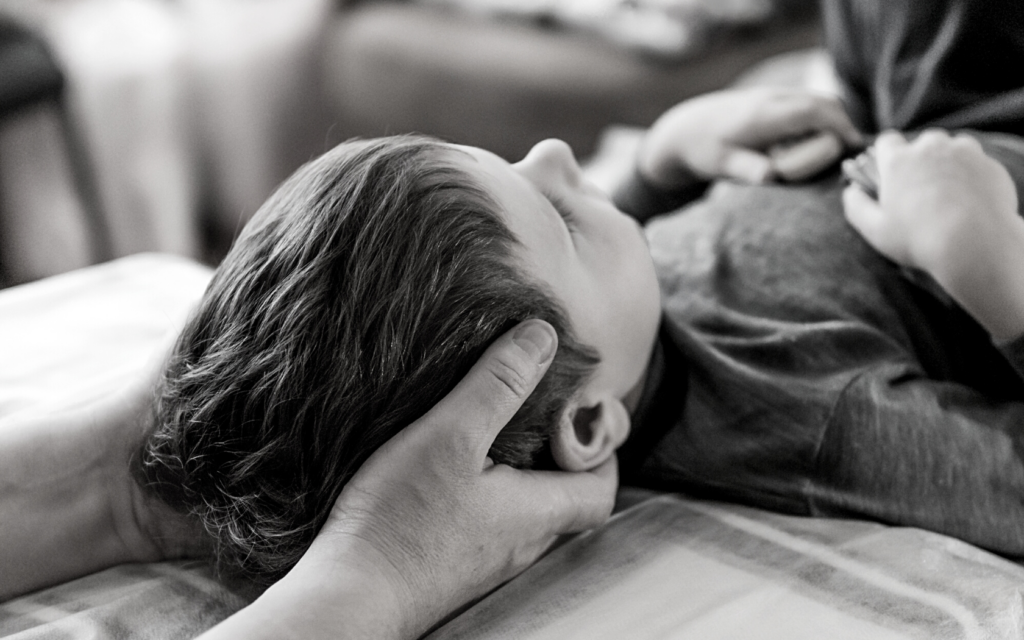As a new mom to an HIE baby, Michelle Bullard faced many unknowns. What would her daughter Avery’s life be like with hypoxic-ischemic encephalopathy? Would her dreams for this beautiful baby be crushed under the weight of this unexpected diagnosis?
At birth, Avery had an ultra-low, worrisome APGAR score of one. Doctors said she might walk at some point–or maybe never. Or perhaps her injuries would be limited to a learning disability. There was no way to know.
The good news was that Avery could receive HIE treatment right after birth. What was the best option for her? Therapeutic hypothermia, or cooling therapy.
After cooling therapy, Avery began to pull through. Her brain seemed to “wake up”! The prognosis looked much better–all thanks to cooling therapy. Years later, she was able to not only walk but run. At age 4, she could run a mile in 13 minutes!
What is Therapeutic Hypothermia?
With therapeutic hypothermia, it’s not a case of “slow and steady wins the race”. Early intervention is key. Doctors have a small window of time after an HIE baby’s birth to apply cooling therapy. It can lessen the blow of oxygen deprivation.
That’s what happened in Avery’s case. A timely diagnosis and HIE treatment made all the difference.
Here’s a glimpse into the cooling therapy process:
- Doctors decide that the baby is a good candidate for cooling therapy. Candidates often have severe HIE.
- A few hours after birth, doctors initiate the cooling process. They place the baby on a cooling blanket or mattress. The blanket will circulate cool water or air to reduce the baby’s body temperature.
- They lower the baby’s body temperature little by little until it’s around 33-34 degrees Celsius (91-93 degrees Fahrenheit). It takes a few hours to reach the right temperature.
- Doctors keep the baby’s body temperature in the target range for about 72 hours. Careful monitoring is needed to ensure that the temperature remains stable.
- After the cooling period, it’s time to bring the baby’s temperature back up. This is a gradual process. Warming the baby too quickly can be harmful.
Cooling therapy works by slowing down the metabolic processes in the brain. It reduces the demand for oxygen and energy. That helps limit further damage to brain cells that lacked oxygen during the HIE event. It also decreases inflammation which can make a brain injury worse.
Cooling Therapy: A Cure for HIE?
Therapeutic hypothermia can minimize brain damage. It may also lessen other effects and consequences of HIE. But it isn’t a miracle treatment. It has limitations.
For one thing, it can’t reverse brain cells that have already died. Secondly, doctors can only use it for the first 6 hours of a baby’s life. In some cases, it may help during the first 24 hours. But after that, it’s ineffective.
So cooling therapy can’t cure hypoxic-ischemic encephalopathy. There’s no cure for this condition right now. But there are plenty of HIE treatment methods that can help children live happy, fulfilling lives.

Other HIE Treatment Options
An HIE baby can benefit from a wide variety of treatment methods. The exact treatment plan will vary from child to child because HIE affects babies in different ways.
For example, some babies with HIE have seizures. These children will need medication or other seizure treatment. Others don’t have seizures, but battle learning disabilities or speech problems. They can benefit from behavioral therapy and speech pathology. Some have trouble walking. Physical therapy can help with that.
There’s quite a long list of HIE treatment methods available. We’ll list the most common here:
- Seizure management
- Blood pressure support
- Respiratory support
- Physical therapy
- Emotional/Behavioral therapy
- Occupational therapy
- Service animal therapy
- Massage therapy
- Sensory integration therapy
- Cerebral palsy medication
There’s one more treatment option for HIE we should mention: stem cell therapy. It involves injecting stem cells into damaged tissues in hopes that they will repair themselves. It’s still in clinical trials at the time this article was written. So it may not be available for your child.
Children with mild HIE might need temporary treatment. Those with moderate to severe cases often need lifelong care. Also, a child’s treatment plan may change as they grow.
No matter what the HIE treatment plan looks like, the goal is the same: to support the child’s development and help them manage any disabilities.
If your child developed HIE because of a doctor’s negligence, you may be eligible for damages. A monetary award via a settlement or verdict could pay for your child’s HIE treatment. Contact Hampton & King’s expert lawyers here to find out if you have a case.




